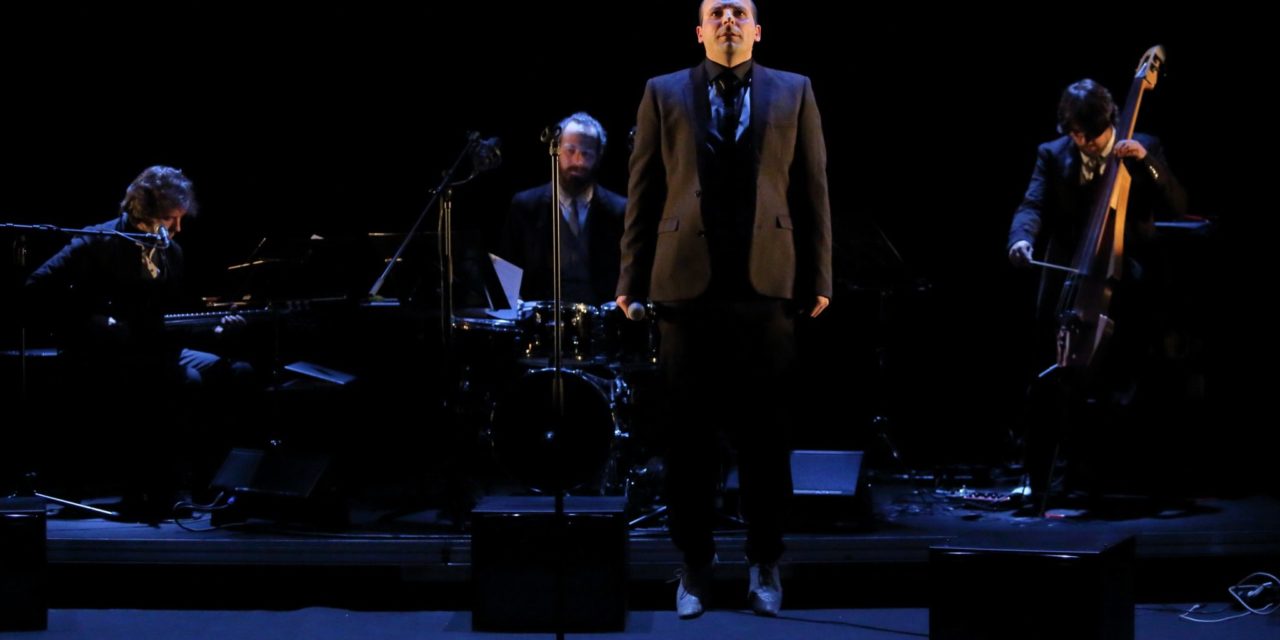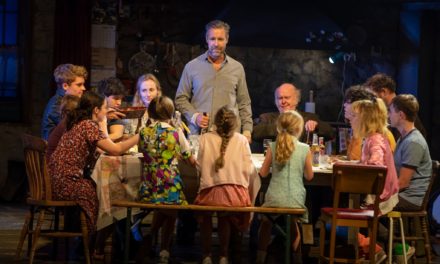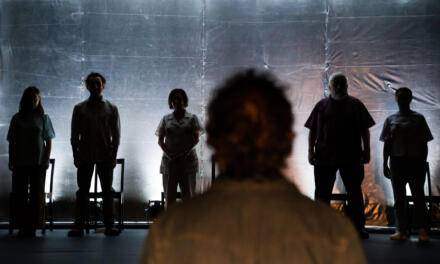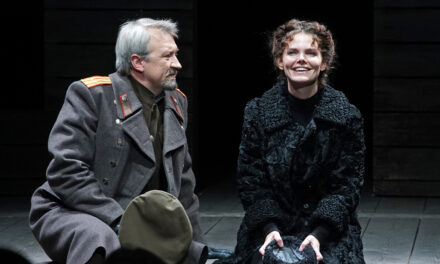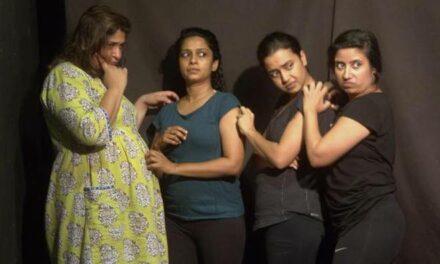On March 10, 2016, in the Carlos Alberto Theatre (Experimental Theatre of the National Theatre of Porto, Oporto, Portugal), the play (Des)Individuação: (Des)Concerto para Bernard Stiegler premiered.
As can be inferred from the title, this play was inspired by the work of the contemporary French philosopher Bernard Stiegler, namely his perspectives on the concept of technical and collective Individuation (the process of constructing the Self as a singularity) as construed by Gilbert Simondon. In spite of this philosophical framework, the intention was never to reproduce its contents literally but rather to raise collective critical discussion, using its matter as substantive inputs to be creatively transformed into action by processes of experimentation and sublimation. Consequently, the creative process addresses questions raised by the experiential tensions and problematics between Self and Other in the light of the power relations within the dominant economic paradigms that are marking the development of contemporary societies.
Evidently, also in a creative theatre process, there is a tacit understanding of a hierarchy where the word of the director prevails in all situations. But what is to happen when the prevalent word of the director devolves to the intervenient the power and responsibility to take their own artistic decisions mediated by him and the other responsible intervenient?
It was from this premise that the work methodology emerged, testing the possibilities and limitations of an artistic collaborative work based in dissensus, presenting alternatives to the dominant hierarchical work structures based on consensus.
Such is the situational starting point of the play. The initial scene is formally set as a concert, with the musicians playing as the public enters. After a blackout, a sole spotlight points to the palace of the lead singer as if announcing his entrance, but he enters only after an abnormally long time. After he enters, he seems not to be allowed to do the scene, for he is constantly interrupted by someone more powerful than him: a director that is not present but is materialized by the live music of the play. The dialogue occurs within this relation of power as if the (absent) director were constantly impeding the actor from manifesting himself in doing the play the way he interpreted it. This premise continues until the actor does the performance in the way he is “supposed” to. He assumes his position of power in doing a species of motivation session for “entrepreneurs” mixed with the format of live TV entertainment, where the real audience is assumed and summoned. The actor then interrupts the scene and leaves the stage, refusing to put his artistic skills in the service of that kind of content, leaving the scene “hanging.”
The power then shifts to one of the musicians, who comments on the situation as if the person in charge had been himself all along. He insults the actor for being a “diva” and orders the other musicians to start the music, afterwards interrupting the music and blaming them for being out of time. The music is started and interrupted at his command, and all the others obey him, until a new voice of command interrupts the music from backstage and everybody obeys. It is the actor, who reenters the stage, this time as if again in a position of power, addressing someone who clearly works for him. The musician accompanies the actor’s monologue with his guitar. The actor may or may not be talking to the musician, but in fact he is talking to himself at the beginning of the play, saying the unheard words of the “absent” director in the initial scenes. After the actor makes his situation of power very clear, he begins to mark the time, and some music begins. First the actor marks the rhythm of the music, but suddenly he is obliged to follow as it progressively accelerates. The actor takes his effort as far as he can and begins to lose control, until he falls to the floor exhausted. As the actor puts himself back together, he begins explaining the reasons for his obedience, commenting on the difficulties of making sense of his own life and of the world, concluding that most human beings are treated as objects: powerless at the hands of the powerful. This last sentence is shouted and echoed throughout the theatre room. The musician, recovering his previous power situation, again interrupts ironically—“Is that off your chest now? / You seem to be unable to deliver your lines properly. / Are you incapable of doing the lines according to my instructions?” Again the musician orders that the performance recommence, and, as if he had always been the director of the play, everybody obeys him. The actor again begins the text, but this time in a more personal way, changing the original text and telling a story from his own personal memories. At the end of the story, as in the beginning, he is again interrupted by the music (again impersonating an absent director) and impeded from proceeding.
Unlike many other projects, it is interesting to notice that the text (written by José Eduardo Silva) and all the other elements (music by Albrecht Loops, Gustavo Costa and Henrique Fernandes; Costumes and Scenography by Cátia Barros; Video installation by Jorge Quintela; and Lighting by Pedro Vieira de Carvalho) were created in response to the ever-changing needs of the project. Or, in other words, it was not the several elements composing a theatrical aesthetic object that came to meet the needs of a previously existing dramatic text, but rather a set of aesthetic objects that were devised to meet the needs of a collective theatre (or performative) creation. In this sense, the original themes of the play were transformed in a creative methodology, where the participants were encouraged in exteriorizing ideas, objects and actions, from which the aesthetic object was to come to existence. The challenge was thus to make all the contributions compatible in the process of constructing the aesthetic object, renouncing to the temptation to censure the artistic proposals with the argument of power.
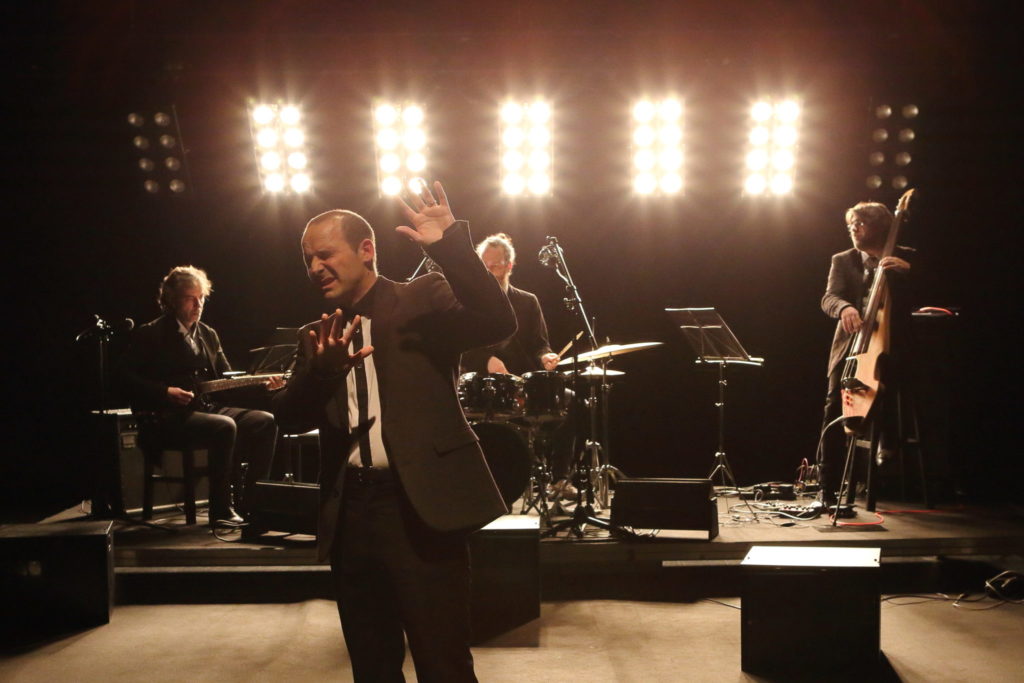
<e,m>(Dis)Individuation: (Dis)Concert for Bernard Stiegler at The the Carlos Alberto Theatre, 2016. Photo credit Susana Neves
This post was written by the author in their personal capacity.The opinions expressed in this article are the author’s own and do not reflect the view of The Theatre Times, their staff or collaborators.
This post was written by José Eduardo Silva.
The views expressed here belong to the author and do not necessarily reflect our views and opinions.

